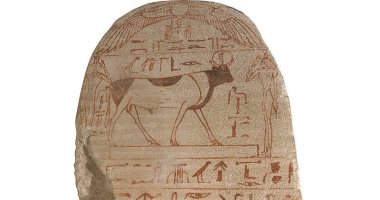The Egyptian Museum of Tahrir displays one of the largest international museums a large number of artifacts that exceed 50 thousand pieces, in front of visitors, and among the unique pieces of the museum is a painting for “Nes Batah” dating back to the limest age, the third transition era, family 21-25, about 1070-945 BC.
And that piece, which was found in Saqqara, record number 99113, the painting belongs to a person named Nes Batah, a representative in the protection of the two deities, Isis and Naftis, accompanying the bull, the holy Abbas of the idol in the area of Mafn.
The era of the third transition was generally defined as a period of decentralization and weakness, at the end of his rule, Ramses is no longer the eleventh “1099-1069 BC”-the last kings of the modern state-is the actual ruler of Egypt as a whole, and after his death he took a branch of the bigness from Tanis ” Al -Hajar is currently “in the northeast of the Delta as their capital.
Although the era of these kings consisting of the twenty-first family “1069-945 BC” was recognized throughout the country, the supreme Egypt is actually under an independent rule in the hands of the older priest of Amun in Luxor, who at the same time occupied the highest position Military, historians describe this period as a thuihad, because the priests of the Lord Amon are the highest authority in the country than the king himself.
Shishnak I, the founder of the twenty -second family, “About 945-715 BC”, came from a strong Libyan family from Bobasts “Tal Basta currently” in the east of the Delta, which made it its capital, and he succeeded in making the country under his control, and carried out military campaigns Successful in the east, “Palestine, Lebanon and Syria”, and he also implemented huge construction projects, but unfortunately this success in the short term cannot reflect the general trend of the decentralized state that prevailed in Egypt, and after his death the central government’s control of the country began to decline.
By the age of twenty -third family, many regions were not only completely independent, but their rulers were in fact considered by themselves, wearing royal badges and holding royal titles, during that period, the Cushitic Nubian kingdom stationed around a plant near the fourth gendel, to rise until it started In the invasion of Egypt, in the end, the twenty -fifth Nubian family occupied the country until it reached Memphis under the rule of King Ben Many great facilities.
Board.

